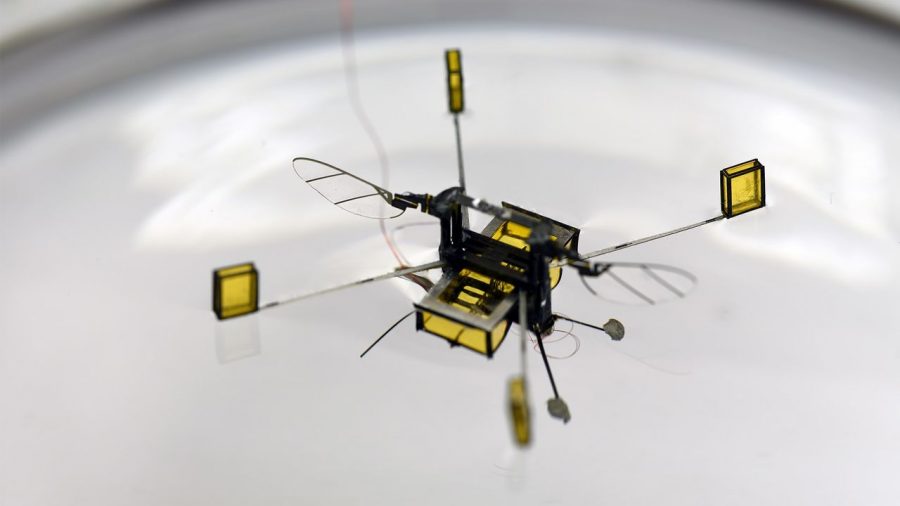A New Multi- Purpose Drone
November 28, 2017
A team of scientists from the School of Engineering and Applied Sciences (SEAS) and the Wyss Institute for Biologically-Inspired Engineering at Harvard University has made a multi-purpose drone that can float on water and fly in air.
The drone itself is 1,000 time lighter than previous aero-aquatic drones, and is part of a line of robots called Robobees, which are extremely small flying drones. This Robobee is nearly as small as a bee, and even looks like one with its yellow wings and black cords.
Making a drone hybrid that can both fly in air and float in water is a very difficult process. Since water is approximately a thousand times denser than air, for small objects like bees swimming in water is like swimming in a pond of thick honey. Therefore, if the drone doesn’t have the right momentum, the fragile wings can easily break. The researchers took a long time to find the so called “goldilocks” of the wing’s rotation speed. The right amount of spin is adjusted from the air onto the water, and even the wings have paddles for support while in water. These drones can completely submerge in water and propel themselves back up into the air.
So how does the Robobee propel itself back up? Researchers have used electrolysis to their advantage. Electrolysis is the separation of hydrogen and oxygen molecules in water caused by an electric current. The electrolysis device that applies the electric current also has chambers that are able to store these hydrogen bubbles underneath the drone. When enough pressure is stored in this chamber, the drone is able to pop out of the water without any harm.
Scientists are planning to use new technology for future rescue missions. Drones can be very helpful in finding survivors in debris and delivering food and aid. If drones are capable of staying in multiple environments, they can be used in all types of places. Researchers say the drone is nowhere near from being perfected, but it gives us a good idea of what aero-aquatic aircrafts can look like in the future.


















































































































































